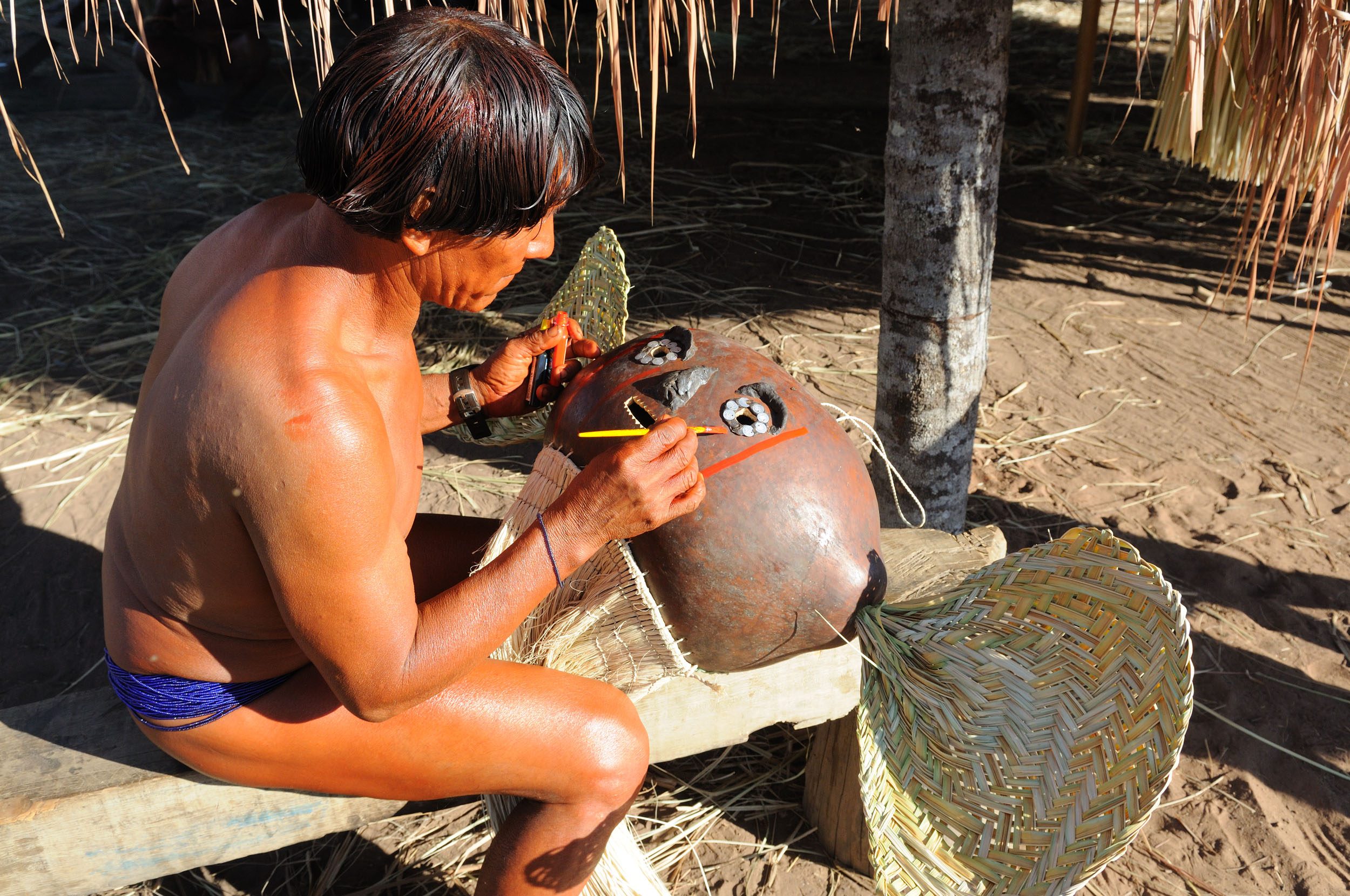Contexts and functions

The reconstitution of the context of the masking practices is the main focus of the Museum’s fieldwork. Carnivals, masked festivals, funerary rites, rites related to initation or to the seasons … the mask occurs in a multitude of contexts. Moreover, they are not necessarily exclusive. Isn’t a carnival in Europe at the same time a seasonal rite and a masked festival ? In Africa, for example, masks worn during initiation rites can also appear in funeral ceremonies. In Asia, certain masked dances are performed for entertainment and at the same time the characters embody ancestors or mythical heroes. In view of this multiplicity, of which we have given just a few examples, any classification efforts are in vain.
Masks (and costumes in a broader sens) can represent humans (adults or children, men or women), animals, hybrid or mythological beings, divinities, demonic beings, heroes, ancestors, plant spirits etc.
Mask practices may have, for example, entertaining, decorative, cathartic, apotropaic, propitiatory or prophylactic functions. They take place in a vast variety of circumstances. They may be public, secret, sacred, profane, festive, collective, intimate, silent, loud etc.
The mask and the practice connected to it can exert influence on the rules of the society to which they belong. They sometimes play the role of an outlet. This applies to many carnivals. However, the mask also has a social function, for example in initiation rites where masked beings (often ancestor spirits) educate the young people by teaching them social rules in order to enable them to become fully-fledged members of the community. Furthermore, the mask (always to be understood in a broad sense) may also possess magical effectiveness. Sometimes considered as a receptacle for a supernatural power, the mask allows the wearer to embody a spirit. The latter magically acts on the community it comes from. This spirit can ensure health, bring good luck, guarantee prosperity, but it can also go to war and attack or kill ennemies. This magical effectiveness is sometimes connected with totemism. In this case, the spirits embodied by the mask are mythical heroes or ancestors of the clan or the lineage.

